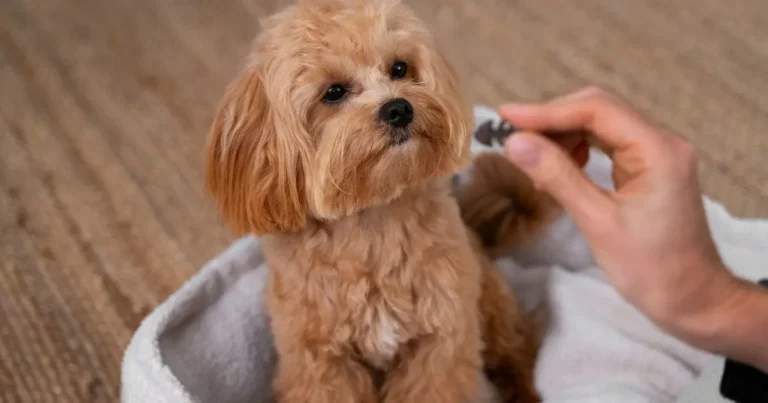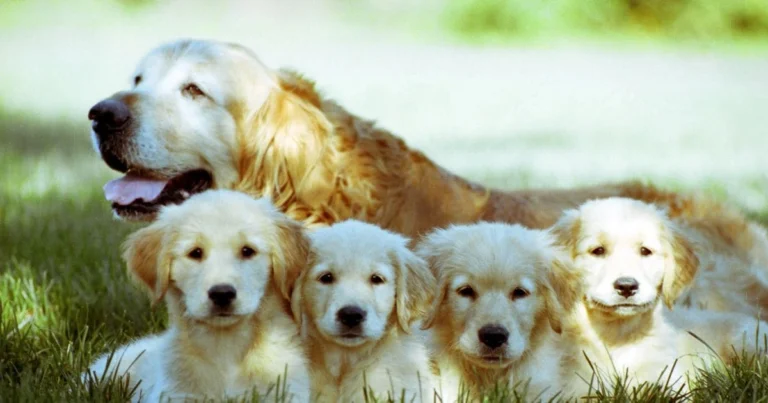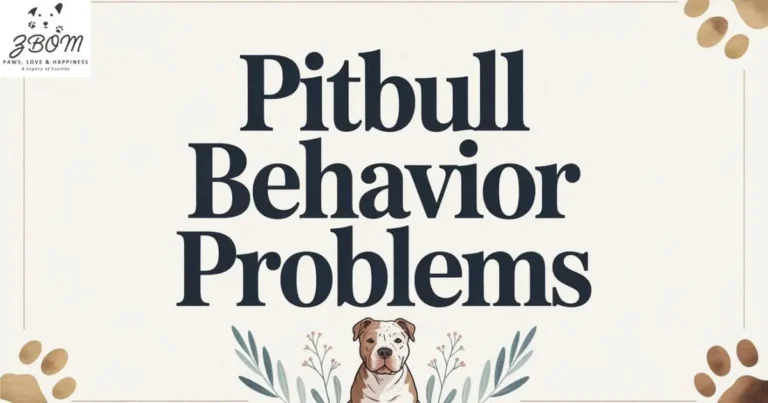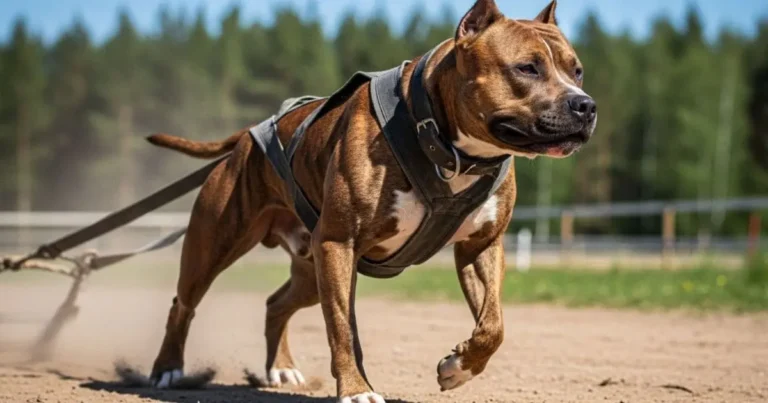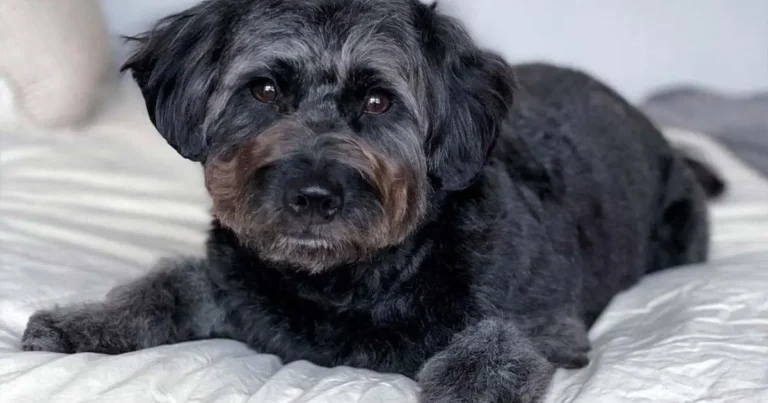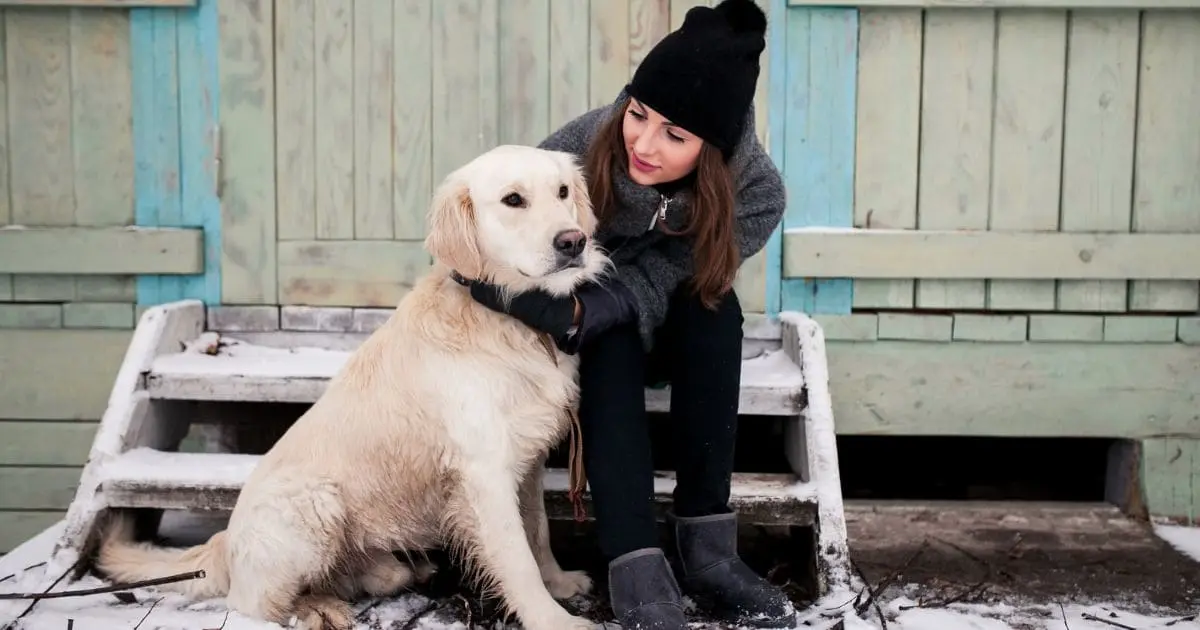
Why Is My Husky Shedding In Winter
Walking into your home during the dead of winter and finding tufts of fur floating across the floor like tumbleweeds can leave any husky owner scratching their head in confusion. After all, isn’t winter supposed to be the time when these Arctic-bred dogs are in their element, Why Is My Husky Shedding In Winter sporting that thick, luxurious coat they’re famous for? You’d think shedding would be reserved for spring and summer when they need to cool down, not during the coldest months of the year when every bit of fur should matter.
But if you’re noticing your husky leaving behind trails of hair on your couch, carpets, and clothes right in the middle of winter, you’re not imagining things—and you’re definitely not alone. This seemingly backward situation actually has several logical explanations rooted in your husky’s biology, living environment, and the way modern indoor life affects their natural coat cycles.
Also Read: Can I Use Human Hair Conditioner On My Dog
While huskies are built for subzero temperatures with their double-layered coats designed for Siberian survival, the reality is that most pet huskies today don’t live in those extreme conditions.Instead, they’re splitting time between heated homes and outdoor excursions, which can throw their entire shedding schedule into chaos.
Understanding why your husky is dropping fur during winter requires looking beyond the calendar and considering factors like indoor heating, artificial lighting, stress levels, diet, and even underlying health issues that might be triggering unexpected coat loss. The good news is that winter shedding isn’t always a cause for alarm, but knowing what’s normal and what deserves a closer look can help you keep your husky healthy and maybe save your vacuum cleaner from working overtime during a season when you least expected it.
Also Read: Do French Bulldogs Get Along With Other Dogs
Short Answer About Why Dogs Shed in the Winter
Dogs shedding during winter might seem counterintuitive, but it’s actually more common than most pet owners realize. The biggest culprit behind this unexpected fur loss is indoor heating. When you crank up the thermostat to stay warm, your home’s artificial climate confuses your dog’s natural coat regulation system.Why Is My Husky Shedding In Winter their body thinks it’s experiencing a warmer environment and responds by shedding the undercoat they’d normally keep for insulation. This is especially true for dogs who spend most of their time indoors rather than outside in genuinely cold weather.
Why Dogs Shed in the Winter
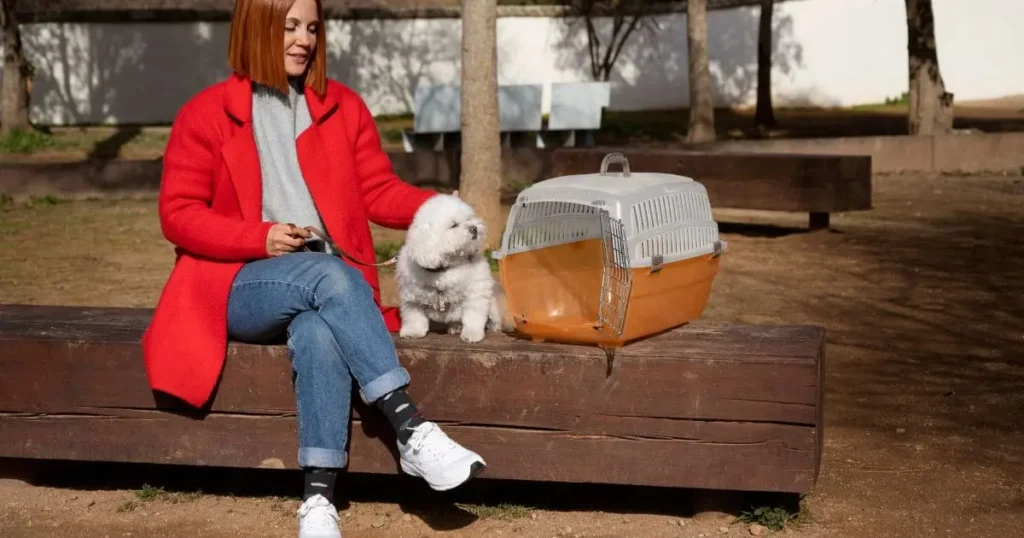
Understanding dog shedding is essential for pet owners. All animals with hair, including humans shed through regular shedding patterns. If you’re wondering when will dog stop shedding, the reality is shedding never stops. This is part of the natural life cycle involving hair shafts within follicles that go through phases of growth and shedding phases. Dead hairs shed naturally to make room for fresh new growth. Below are the 5 reasons dogs shed.
Also Read: How To Cool Down a French Bulldog
1. Changes in Climate
Seasonal changes represent one of the primary shedding causes. Just as people change wardrobes seasonally, dogs must adapt to temperature and handle temperature changes through climate adaptation. Most pets shed extra during spring shedding and fall shedding periods as part of seasonal coat change.
Many owners notice dog shedding winter patterns during colder months and ask how long dogs shed winter coat. The answer involves understanding winter coat shedding, where dogs shed their lightweight coats to prepare for protective winter coats. This is comparable to humans swapping a light cardigan for a heavy parka. Observing shedding in winter is perfectly normal shedding behavior.
2. Stress or Anxiety
Do French Bulldogs Bite, Stress or anxiety significantly impacts shedding patterns. Stress causes hair loss as dogs lose hair when experiencing stress impact. A change in schedule, new people, new animals, or household changes can emotionally impact your pet and cause stress, leading to excess shedding.
Beyond increased shedding rate, watch for signs of anxiety and anxiety symptoms including having accidents, eating more or eating less than usual, whining, crying, or displaying destructive behavior.
3. Medical Reasons

Dog health is often health reflected through shedding patterns, so monitor any unexplained excessive shedding. Medical reasons and health issues include medical conditions like endocrine diseases, skin disorders, nutritional deficiencies, and vitamin deficiencies. Other disorders serve as hair loss causes that affect the rate of hair growth.
Hormonal fluctuations can cause female dogs to shed after heat cycle. Contact vet immediately if the shedding rate seems beyond ordinary shedding levels for your pet.
Dehydration represents major factors in excessive shedding factors. Not enough water leads to dry skin, a primary contributor to excess hair loss.Why Is My Husky Shedding In Winter ensure fresh water availability for staying hydrated, maintaining proper water intake and hydration importance even during cooler months hydration needs.
Also Read: Why Does My Frenchie Keep Throwing Up
4. Hygiene
Regardless of type of hair, brushing importance cannot be overstated for good hygiene. Routine grooming, with some requiring brushing every day, is absolutely essential for all pets. Brushing dogs and combing dogs helps remove dead hairs through dead hair removal before they cover every square inch home.
Regular brushing benefits include distributing healthy natural oils and oils produced as skin oils throughout coat. This helps hairs stay in place on your pet, not on floor. Bathe regularly using dog shampoo only, as human shampoo harsh formulations will irritate skin. Following proper bathing practices with proper shampoo maintains grooming routine effectiveness and brushing benefits.
5. Diet
Since diet plays role in overall health, providing nutritious food is crucial for nutrition impact. Specialty food options are designed to promote healthy coat and achieve shiny coat results, demonstrating strong food quality and coat health connection.
Also Read: What Are Fluffy Frenchies Mixed With
Dogs with food allergies often experience diet-related shedding. These pets benefit from protein-rich food and grain-free food to improve dry skin and reduce shedding through allergy management. Understanding the skin health diet connection helps address shedding causes effectively.
Helpful Shedding Tips
The best for dog health and your own sanity is to maintain regular schedule practices for your pet’s wellness routine. Establishing a schedule of brushing and schedule of grooming through a regular brushing schedule and regular grooming schedule ensures grooming maintenance and grooming consistency. Why Is My Husky Shedding In Winter This routine care requires consistent grooming and consistent brushing with appropriate grooming frequency and brushing frequency for effective regular maintenance.
Keeping dog hydrated is essential for dog hydration and meeting hydration needs through adequate hydration. Water provision and hydration maintenance support proper care and overall care. Providing nutritious food ensures a nutritious diet with quality nutrition that addresses nutritional needs through food quality provision and proper nutrition for optimal pet wellness.
Pay close attention to factors causing stress and impacting health through stress awareness and health awareness. Stress identification and attention to stress help with stress monitoring and stress management. Understanding stress factors and their health impacts supports health monitoring and health observation for better health management and health maintenance.
Also Read: How Much Are Fluffy French Bulldogs
Through health attention and health vigilance, you can monitor health and ensure preventive care. This attentive ownership and responsible pet care approach addresses daily care needs within your pet care routine and care schedule for comprehensive wellness routine management.
At the end of day, the puppy eyes and wet kisses are well worth the dog hair that comes with pet ownership. Just make sure to stock up on lint rollers to manage the inevitable shedding while maintaining your commitment to proper care, grooming frequency, and health vigilance through consistent daily care practices.
When Do Huskies Shed?
Huskies shed in a unique pattern compared to many dog breeds. While most breeds shed all year round, husky sheds through twice yearly shedding, specifically shed twice a year during both summer shedding and winter months shedding periods. This seasonal shedding follows a predictable shedding timeline and biannual shedding schedule.
When weather changes occur, husky body temperature and body temperature changes trigger the natural shedding cycle. The husky naturally shed coat to regulate body temperature through effective temperature regulation and temperature adaptation. Why Is My Husky Shedding In Winter this coat adaptation and weather adaptation enable thermal regulation for optimal performance.
Also Read: How Many Puppies Do French Bulldogs Have
During summer months, Siberian Huskies experience thick double coat and double coat shedding. They shed their double layer coat and insulation coat, then replace with single-layer coat. This single-layer coat serves as a cooling coat designed to keep them cool during warmer temperatures. The summer coat provides appropriate seasonal coat change for comfort.
During winter months, huskies shed single-layer coat and replace with thicker coat. This thicker winter coat and winter coat function as a warming coat designed to keep them warm. The winter coat shedding prepares them for the next coat cycle and coat replacement phase.
Huskies also shed to get rid of old fur through old coat removal, making room to make room for new fur coat that is fur coat growing. This fur regeneration and new coat growth process supports coat transformation throughout the shedding season.
Siberian Huskies have evolved to perform at peak performance in all weathers. This shedding enables them to maintain optimal condition. The natural shedding cycle and shedding pattern represent breed-specific shedding characteristics shared among arctic breeds and northern breeds.
Also Read: What Is The Best Brush To Use For Siberian Husky?
Husky owners should note that those with a Samoyed or Malamute experience same shedding season patterns. The husky shedding season, shedding timeline, and time period remain consistent across these breeds.
Although it can be pain when shedding occurs during summer coat or winter coat shedding transitions, at least owners know the predictable schedule. Understanding this coat cycle helps husky owners and similar breed owners prepare for twice annual shedding periods of seasonal shedding activity.
Siberian Husky Shedding
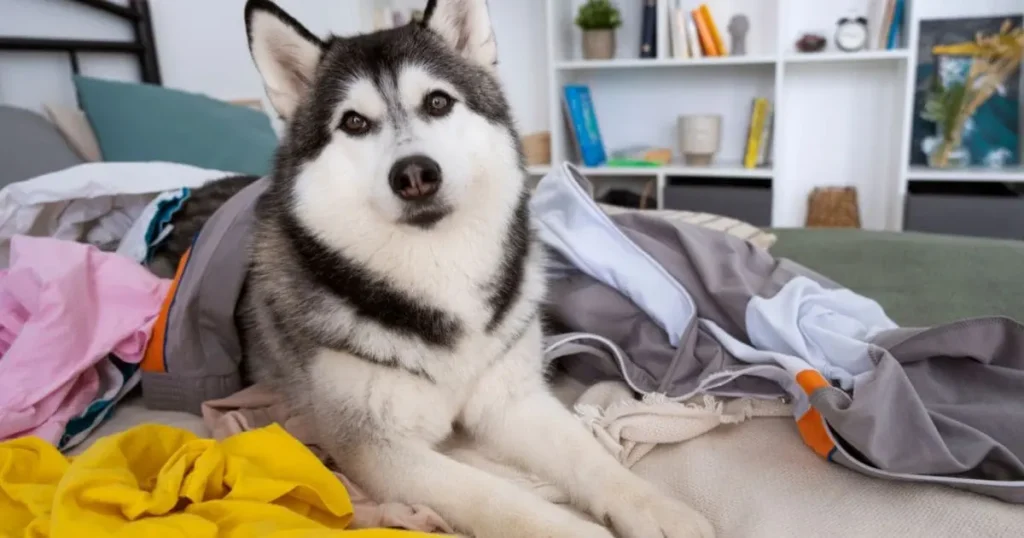
Siberian Huskies recognized worldwide display distinctive features including piercing blue eyes and iconic double coats. Their breed recognition stems from unique physical traits and breed characteristics. The coat pattern features white beneath as the undercoat color and dark above as the overcoat color, creating a striking color combination. This coat coloring and coat structure represent key eye color and inherited traits that define their appearance.
Shedding Patterns and Methods
Siberian Huskies shed in the same way as any other husky and different huskies, following a twice a year schedule. This shedding method demonstrates shedding similarity across husky varieties and dog breeds with double coats. They shed huge amount and huge amount of hair, particularly going into summer, resulting in heavy shedding and massive hair loss during summer preparation and pre-summer shedding periods. This seasonal preparation helps them prepare for seasonal changes.
Also Read: How to Choose the Best Whelping Box French Bulldogs
Evolutionary Background and Adaptation
Huskies evolved and evolved this way because of necessity through evolutionary adaptation. This evolved naturally process represents environmental necessity driven by survival instinct. The breed evolution and adaptation necessity led to their protective coating and natural protection capabilities. Their coat evolution developed to provide high levels of protection and various protection levels suited to harsh climates.
Instinctive Behavior and Traits
Despite the fact they no longer need such extensive protection, their basic instincts and primitive instincts have remained the same as unchanged instincts. This instinctive behavior and instinctual shedding reflect natural behavior and ancestral traits. These genetic traits and inherited traits remain embedded in their breed characteristics, ensuring the continuation of double-coated breeds adaptations through generations.
Husky Before And After Shedding

It is worth mentioning that huskies never lose their double coat and permanent double coat, no matter season throughout the year-round coat cycle. This coat retention and coat preservation means they never fully shed their protective layers. Twice a year the husky will shed, but the process involves thinning coat rather than losing it completely. This thinning not losing approach prevents complete loss prevention and losing entirely scenarios. The seasonal thinning represents partial shedding and coat thinning process instead of full coat removal.
Also Read: Bernedoodle Grooming
Shedding During Warmer Months
As warmer months and warmer months approach with warmer weather conditions, husky shed their bottom layer and double coat layer through undercoat shedding and undercoat removal. This leaves a finer layer and finer coat layer while the top layer remains intact. The summer coat and summer layer help maintain cool temperature and cool temperature for effective temperature maintenance and temperature control during hot seasons.
Fall Shedding Variations
It is important to note that not all huskies blow their coats or blow coats completely during fall and fall season. The fall shedding and autumn shedding periods show individual differences and variable shedding patterns with coat blowing variation among different dogs. During fall, owners see only a small amount of husky fur in some cases, indicating incomplete coat blow and minimal shedding.
Winter Coat Development
As winter months arrive with winter arrival, some dogs don’t shed lot or produce lot of fur. This limited fur loss, light shedding, reduced shedding, and sparse fur loss during fall allows them to simply allow their new coat to develop. Why Is My Husky Shedding In Winter These dogs thicken existing coat and build upon the existing coat they used during summer through coat thickening and natural thickening processes. This layer buildup and coat layering creates seasonal coat retention with the retained coat providing adequate insulation for colder months.
Conclusion
Finding your husky shedding heavily in winter doesn’t mean something is automatically wrong—it’s often just a side effect of the comfortable modern life we provide for our pets. The combination of central heating, artificial lighting, and indoor living has essentially reprogrammed how these Arctic dogs respond to seasonal changes, creating year-round shedding patterns that their wild ancestors never experienced. Your husky’s body is simply trying to adapt to an environment that sends conflicting signals about what season it actually is.
While this can be frustrating when you’re dealing with fur everywhere during months you thought would be shed-free, it’s usually manageable with the right approach. Regular brushing becomes even more important during winter to help remove loose fur and distribute natural oils that combat the drying effects of indoor heat. Consider using a humidifier to add moisture back into the air, which benefits both your husky’s skin and your own comfort.
Pay attention to diet quality too, since proper nutrition supports healthy coat growth and can minimize excessive shedding. That said, don’t ignore your instincts if something seems off. Excessive shedding accompanied by bald spots, red irritated skin, constant scratching, lethargy, or changes in appetite deserves a veterinary checkup to rule out health problems like thyroid issues, allergies, or infections.
The bottom line is that some winter shedding in your husky is perfectly normal given how most of us live today, but being observant about what’s typical for your individual dog helps you catch potential problems early. With proper grooming, environmental adjustments, and attention to overall health, you can keep winter shedding under control while ensuring your husky stays comfortable and healthy throughout the coldest months.
FAQ
Why does my husky shed in winter?
Husky shed dense undercoat in colder months to stay cool, grow in thicker coat; regular grooming during shedding periods manage loose fur, coat health.
Why do dogs shed so much in the winter?
Dogs shed lightweight coats to make room for protective winter coats.
How bad is husky shedding?
For an allergy sufferer, Husky sheds heavily, one of the worst breeds causing severe symptoms, unlike Doodles with hypoallergenic qualities, Husky not hypoallergenic.
Does diet affect husky shedding?
Good nutrition is vital for every living thing and fur family; poor-quality or cheap dog food, a hidden culprit, causes shedding excessively and affects a healthy coat.
What is the leading cause of death in huskies?
Cancer is a common cause of death in dogs during their golden years; husky is prone to basal cell tumors, sebaceous gland tumors, anal gland tumors, hemangiopericytomas.

